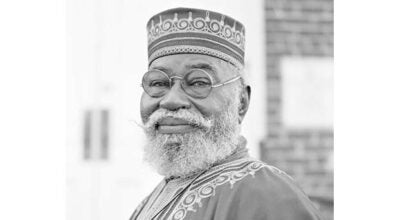Finance presentation held
Published 1:24 pm Thursday, June 13, 2019
James Sanderson from Davenport & Company presented on Cumberland County’s finances during a Cumberland County Board of Supervisors meeting held May 14.
According to Sanderson, he said some counties in Virginia are rated based on their credit score. Cumberland County does not have a rating.
Reviewing the county’s profile, Sanderson said the population remains flat since 2009, with approximately 9,800-10,000 residents. The county’s unemployment rate remains relatively consistent with state trends, with unemployment in Cumberland in 2018 estimated to be around 3.3 percent, approximately 3 percent in Virginia and 3.9 percent in the United States. In 2010 during the recession, the unemployment rate rose to as high as 8.4 percent in the county.
Per capita personal income is estimated to have grown 3.4 percent in the past 10 years, with income estimated to be around $37,106 in 2017.
The county’s total taxable assessed value has averaged 0.9 percent average annual growth since 2009, with 2018’s estimate to be approximately $952,268,784, according to the presentation.
Sanderson said the last reassessment performed by the county was in 2013, effective Jan. 1, 2014, and that another reassessment would be due this year. The county is taking on a reassessment that would take effect on Jan. 1, 2020.
The county’s real estate tax rate is currently at 78 cents, having been at 59 cents in 2009. It jumped to 70 cents in 2010, lowered to 68 cents in 2011 and 2012, moved up to 74 cents in 2013 and moved up to 78 cents in 2015.
According to the presentation, “Annual General Fund results have been mixed over the last seven fiscal years, average annual revenue growth (-1.02 percent) has been outpaced by average annual expenditure growth (1.71 percent). Refunding bond issuances occurred in Fiscal Years 2013 and 2017. The accounting impact of the payoff of the Refunded Bonds has been removed from the General Fund Expenditures in these years.”
Concerning the general fund, Sanderson said the county has used the general fund balance, but said it has also been built back up.
In the presentation, Cumberland’s available and unassigned fund balances as percentages of revenue were compared with the median percentages of counties that have the credit score ranking systems.
“You’re almost at 40 percent,” Sanderson said. “That’s a very good number.”
Tax supported debt comes to approximately $27,593,193. General obligation bonds make up approximately $22,573,196 of the total amount, VACO/VML direct loan program makes up $3,520,000 and state literary fund loans make up $1,499,997.
Debt service is flat at approximately $2.9 million each year out through 2030.
“You’re paying off your debt service pretty quickly,” Sanderson said.
According to the presentation, Cumberland’s outpay exceeded the medians of those who fall under the top rated credit score system in Virginia.
“The county’s revenues and expenditures have increased moderately over the prior several years with intermittent one-time revenue and expense items,” the presentation cited. “The county has grown its fund balance over the past two fiscal years providing the county with security and flexibility in the future. The county’s overall debt levels are moderately higher than comparatives but the county has an above average payoff of its debt with all retired by FY 2030.”
District Two Supervisor Lloyd Banks, asked about the cost of the fee when the county went through Davenport & Co. for refinancing.
Sanderson said he wasn’t certain, but estimated it would have been between $45,000-$50,000.
“His recommendations come with an expense of $45,000-$50,000,” Banks said.
District Five Supervisor Parker Wheeler asked how much would have been saved in the county through the refinancing process.
Sanderson said he didn’t have those exact figures, but believed the county saved an excess of $1 million-plus.
Banks made the argument that the plan has not ultimately saved the county money.
“Let’s not deceive these people,” Banks said. “What we did was we extended the period of payment, and so we’ve reduced our payments and extended the amount. That is not a savings of a million dollars. All we have done is reduced our payment, kicked the can down the road, and that is not a savings. That is a reduction in the amount that we’re paying out … If you take a 15-year loan and extend it out to 30 years, you’re going to pay a ton of more money in interest rates.”
Giles said the payment period may have fluctuated by six months to one fiscal year, but that the payment period had not been extended.
Sanderson said he could provide that information at another time.
“The restructuring of the loan did make it so that we were able to maintain some years’ worth of revenue,” District Three Supervisor Kevin Ingle said.
Giles said Davenport & Company could come by every once in a while to provide information on county finances.





